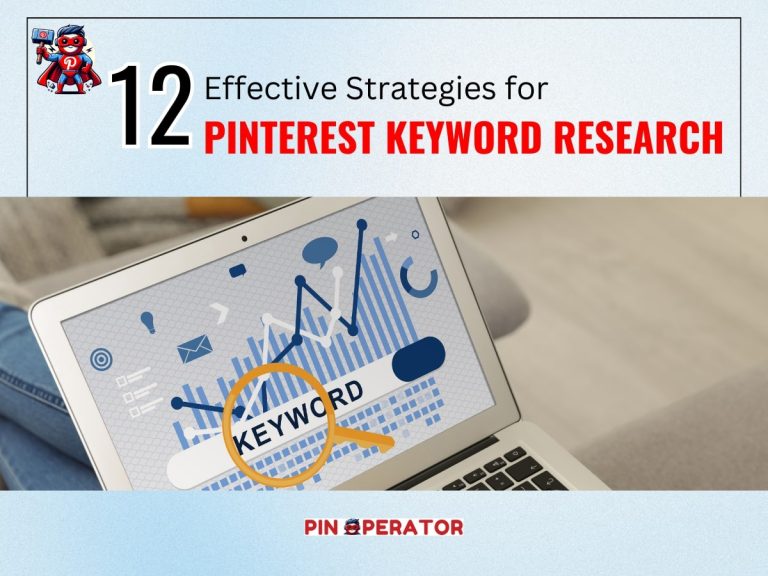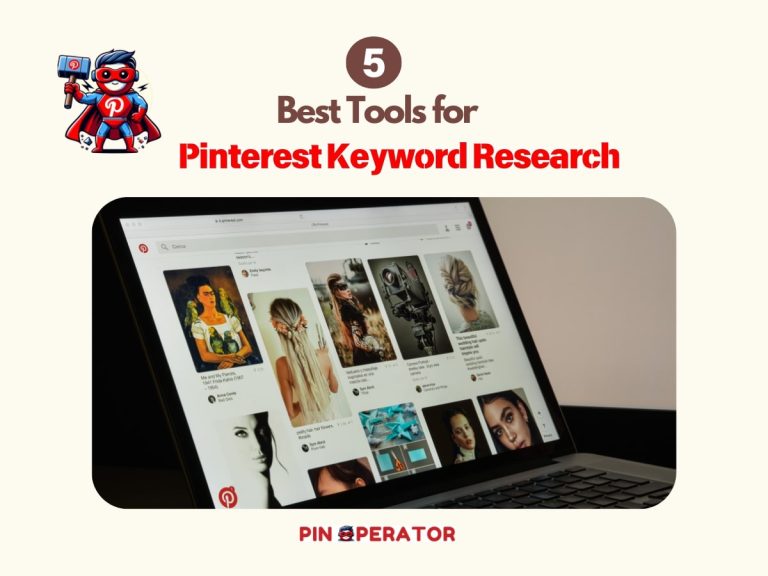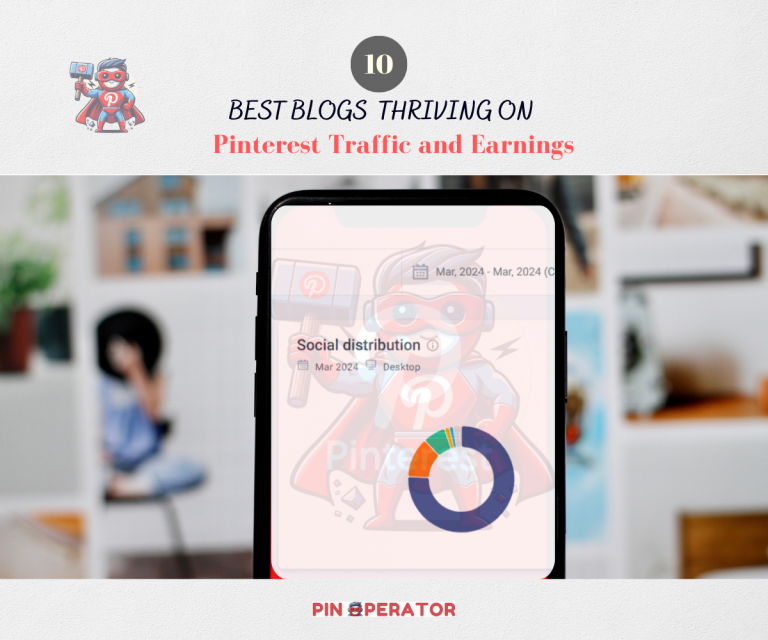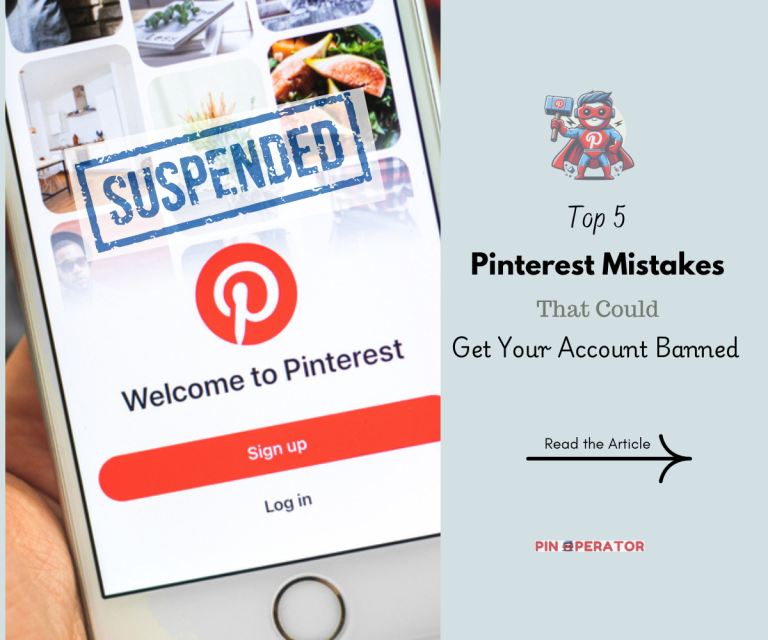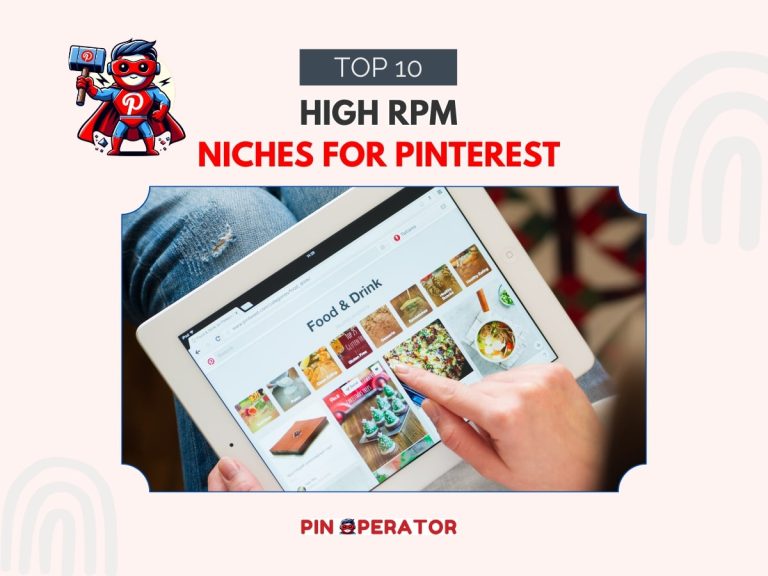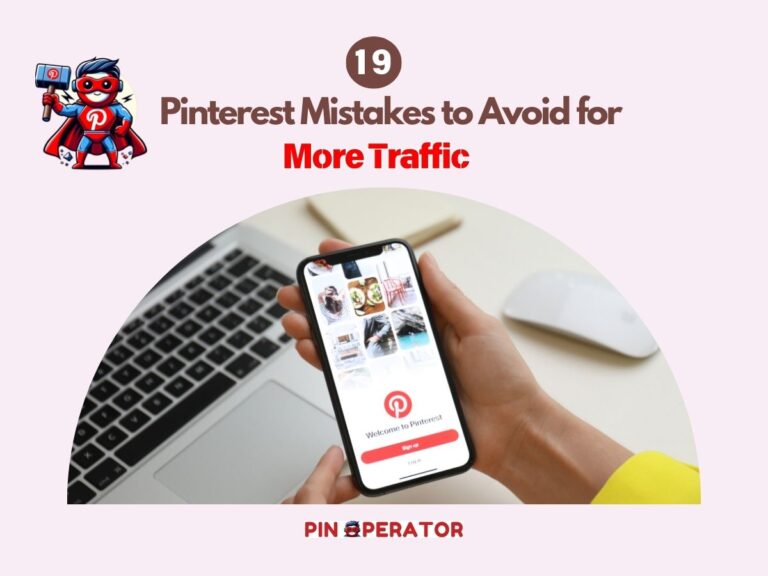The Pinterest Affiliate Marketing Blueprint for Success
Pinterest is not just a hub for discovering DIY projects, beautiful home decor, or meal inspiration. It’s also a robust platform for affiliate marketing, and if you approach it correctly, it can turn into a substantial source of income.
Whether you’re just starting out or aiming to refine your approach, this guide will help you navigate the basics of Pinterest affiliate marketing in a straightforward manner.
What is Pinterest Affiliate Marketing?
In essence, Pinterest affiliate marketing is about promoting products on Pinterest and earning a commission for any sales made through your referral links.
Consider it as sharing your favorite products in a way that benefits both you and your audience. You design eye-catching pins that draw in Pinterest users, and when they click through and make a purchase via your affiliate link, you earn a commission.
The great thing about Pinterest is that its users are eager to discover, click, and shop, making it an ideal platform for affiliate marketing.
Why Pinterest for Affiliate Marketing?

Pinterest is unique compared to other social media platforms because it functions as a visual search engine. Users visit Pinterest looking for inspiration and solutions, whether it’s a new workout plan, a recipe, or a product they didn’t realize they needed. This “shopping mindset” creates an ideal environment for affiliate marketing.
Step-by-Step Guide to Start Pinterest Affiliate Marketing
To kick off your Pinterest affiliate marketing journey, focus on establishing a visual presence where your pins highlight products relevant to your niche. By optimizing your profile, selecting the right keywords, and crafting engaging content, you can attract traffic and drive sales.
Think of it as setting up a storefront—except instead of customers wandering through aisles, they’re scrolling through your thoughtfully designed pins.
When I began using Pinterest, I quickly discovered that it’s all about creating that captivating moment that stops users in their tracks. And the best part? There are no checkout lines or the pressure of in-person sales.
1. Find Your Niche and Audience
Before jumping in, you need to identify a niche that aligns with your interests, experience, and Pinterest’s visual platform. Niches like home decor, fashion, beauty, fitness, and food perform good on Pinterest.
Here’s how you can pick your niche for Pinterest affiliates:
- Look at your interests: What are you passionate about?
- Assess market demand: Are there enough products and content ideas within this niche?
- Find your audience: Make sure there is an audience that fits your niche on Pinterest.
2. Sign Up for Affiliate Programs
Once your niche is sorted, the next step is to find affiliate programs that offer products in your niche. Choose affiliate programs that:
- Have products your audience would genuinely be interested in.
- Offer good commission rates.
- Provide quality support and resources for affiliates.
Some popular programs include Amazon Associates, ShareASale, Impact, and LTK. Remember to pick reputable programs and provide products that resonate well with your audience.
3. Set Up a Pinterest Business Account
To access analytics and promotional tools, it’s important to create a Pinterest business account. This account gives you insights into which pins are performing best and who your audience is and allows you to use paid ads if you ever want to scale up.
- Visit Pinterest.com and choose to create a business account.
- Complete your profile details with a username, profile picture, and a keyword-rich bio that explains what your content is all about.
- Link your website if you have one. This not only enhances credibility but also helps drive traffic from Pinterest to your blog or online store.
4. Optimize Your Pinterest Profile and Boards
Optimization is the key to getting discovered on Pinterest. Here’s what you need to focus on:
- Username and Bio: Use relevant keywords that describe your niche and the content you’ll be sharing. Keep it clear and to the point.
- Boards: Create boards around topics that align with your niche. Use keyword-rich titles and descriptions to boost visibility.
- Profile Picture: Use a professional image of yourself or a logo that aligns with your brand.
5. Keyword Research and Content Strategy
Pinterest is a search-based platform, so SEO (Search Engine Optimization) is your best friend. Proper keyword research ensures your pins show up in search results.
- Use Pinterest Search Bar: Type in relevant terms and see what auto-suggestions pop up; these are popular searches.
- Pinterest Trends: Use this tool to see what’s currently trending and align your content with those topics.
- Create a Content Calendar: Plan your pins around trending topics, seasonal content, and evergreen ideas to keep your boards fresh and engaging.
6. Create Engaging and Click-Worthy Pins
Pinterest is a visual platform, so your pins need to stand out. Tools like Canva make it easy to design professional and visually appealing pins without needing graphic design skills. Keep these points in mind:
- High-Quality Images: Use clear, bright, and eye-catching visuals that represent the product or content well.
- Text Overlays: Add text that quickly explains what your pin is about. Use large, easy-to-read fonts.
- Brand Consistency: Stick to a style guide with consistent fonts, colors, and logo placement. This helps build brand recognition.
- Call-to-Action (CTA): Encourage viewers to take action, like “Learn More” or “Shop Now.”
7. Embed Your Affiliate Links in the Right Way
When you’re creating content on Pinterest, make sure to include affiliate links in a way that feels natural and not overly “salesy.”
- Direct Affiliate Links in Pins: You can embed affiliate links directly in your pins. Make sure to follow Pinterest’s affiliate guidelines and disclose the affiliate nature.
- Link to Blog Posts: Alternatively, write informative blog posts that include your affiliate links. Your pins will then link to these blog posts, adding value and context to the products you are promoting.
8. Consistent Pinning and Scheduling
Consistency is key on Pinterest. Aim to pin regularly. You don’t have to manually pin all the time—use scheduling tools like Tailwind (NOT recommended nowadays; it doesn’t work as it used to) or Pinterest’s native scheduler to keep your pins flowing even when you’re busy.
9. Analyze and Optimize Performance
Pinterest Analytics is your go-to tool for understanding what works and what doesn’t. Track metrics like impressions, clicks, saves, and conversion rates. Use this data to:
- Refine your pin designs: Double down on styles and topics that are working.
- Optimize underperforming pins: Refresh descriptions, change visuals, or update keywords.
- Monitor trends: Stay on top of what’s trending on Pinterest and adjust your strategy accordingly.
10. Experiment with Group Boards and Community Engagement
Join Group Boards: Collaborate with other pinners in your niche to expand your reach.
Engage with Other Users: Comment on other people’s pins, repin content that aligns with your brand, and build a community.
11. Monetize Beyond Affiliate Links
As your Pinterest account grows, you can explore more ways to monetize:
Sponsored Content: Partner with brands for sponsored pins or content.
Sell Your Own Products: If you have an online store, create pins that drive traffic directly to your e-commerce site.
Create Digital Products: Share eBooks, printables, or courses that your audience would find valuable.
12. Building an Email List for Affiliate Marketing Success
An email list is a valuable asset for any affiliate marketer. Pinterest is an effective platform for driving traffic to affiliate offers and building a loyal subscriber base that you can engage over time.
Leveraging Pinterest to Build an Email List:
Lead Magnets: Offer something valuable in exchange for email sign-ups. Popular lead magnets include eBooks, checklists, or templates closely tied to your niche. For example, if you’re promoting fitness products, offer a free “7-Day Home Workout Plan.
Pinterest Pins for Email Capture: Create pins that link directly to your landing page or blog post where your lead magnet is offered. Use compelling CTAs like “Download Now” or “Get Your Free Guide” on your pin image and description.
Exit-Intent Popups: Use tools like OptinMonster or Sumo to create popups that appear when visitors are about to leave your site. These popups can encourage users to subscribe to your email list before they leave. A compelling headline like “Don’t Miss Our Exclusive Freebies!” can significantly boost sign-ups.
Regular Newsletter Ideas for Affiliate Marketing:
Product Roundups and Reviews: Send out weekly or bi-weekly emails that include a roundup of your favorite affiliate products, or detailed reviews of individual products.
Tips and How-Tos: Provide actionable advice that resonates with your audience, while seamlessly integrating affiliate links.
Promotions and Discounts: Share exclusive promotions or discounts from affiliate partners. It gives an incentive for subscribers to take action.
Pro Tip: Stay consistent with your email schedule but avoid overwhelming your audience. Aim for once a week or twice a month, focusing on quality over quantity.
13. Using Pinterest Trends and Seasonal Content for Affiliate Marketing
Pinterest Trends is a powerful tool to discover what’s currently resonating with users. You can significantly increase your affiliate marketing efforts by aligning your content with these trends and seasonal topics.
Capitalizing on Trends for Viral Pins
Pinterest Trends Tool: Regularly explore this tool to see what topics are rising in popularity within your niche. Align your pin designs and affiliate product promotions with these trending topics.
Seasonal Relevance: Pinterest is driven by seasonality – from holidays to events like “back-to-school” or “summer sales.” Create pins in advance of these seasons (4-6 weeks prior) to take advantage of increased searches.
Create Timely & Evergreen Content: While seasonal content drives spikes in traffic, evergreen content ensures consistent performance over time. Mix both types of content in your strategy. For example, if you’re in the “Food” niche, evergreen content could be “Healthy Breakfast Ideas,” while seasonal content could be “Christmas Brunch Recipes.”
Content Calendars:
Developing a content calendar helps maintain consistency and ensures that your pins are always relevant to current and upcoming trends. Plan your content 1-2 months in advance to keep up with seasonal events.
Common Mistakes to Avoid in Pinterest Affiliate Marketing
Many affiliate marketers make common errors that hinder their success on Pinterest. Avoid these pitfalls to ensure long-term growth.
Over-Pinning
Excessive pinning, especially of similar content, can come across as spammy and hurt your account’s reach. Instead, focus on quality over quantity:
Pin 1-3 quality pins daily rather than flooding your boards with low-quality content. Spread them throughout the day using scheduling tools like Tailwind (NOT recommended nowadays; it doesn’t work as it used to) or Pinterest’s native scheduler.
Ignoring SEO
Neglecting keyword optimization on Pinterest can significantly limit your content’s reach:
Always optimize pin descriptions, titles, and board descriptions with relevant keywords to enhance searchability. Use long-tail keywords to target more specific searches.
Neglecting Analytics
Failing to review your Pinterest Analytics means missing out on valuable insights:
Pay attention to clicks, saves, impressions, and conversion rates. Adjust your strategy based on these metrics to optimize performance over time(Mastering Pinterest Aff…).
Failing to Engage with the Audience
Pinterest is a social platform, and engagement helps boost visibility:
Whether it’s on your pins or other users, engage with comments and questions to build a community.
Refreshing and Updating Old Pins
Old pins can be a goldmine of potential if refreshed the right way:
Refresh old pins with updated images, descriptions, and keywords to align them with current trends and improve performance.
Recommended Tools for Pinterest Affiliate Marketing
Canva: Perfect for designing visually appealing pins with various pin templates.
Tailwind: A Pinterest-approved scheduling tool that helps automate pinning, and its analytics provide insights on the best times to post. We DON’T recommend it nowadays in 2024. From our experience, it doesn’t work as it used to before. Use Pinterest’s native scheduler to schedule pins.
Pinterest Trends & Analytics: Use Pinterest’s native tools to track trends and gain insights into what’s performing well.
Geniuslink or Bitly: Link management tools for tracking the performance of your affiliate links and shortening them for better aesthetics.
Direct Linking vs. Linking Through a Blog: Which is Better?
Both direct linking and linking through a blog have pros and cons, and choosing between them depends on your strategy and goals.
Here’s a table comparing Direct Linking and Linking through a Blog:
| Method | Pros | Cons | When to Use |
|---|---|---|---|
| Direct Linking | Quick and straightforward. | Offers limited context about the product. | When your pin provides clear and immediate value (e.g., flash sales). |
| Effective for promoting a specific product. | Users might not trust a direct affiliate link without context. | ||
| Linking Through a Blog | Provides value through context and builds trust. | Requires effort to write and maintain content on a blog. | To create long-term value, educate your audience, or promote multiple products. |
| Easier to incorporate multiple affiliate products in one post. |
Recommendation: Linking through a blog generally works better for building trust and long-term affiliate marketing success. It enables you to provide context, build authority in your niche, and offer a more comprehensive user experience. Direct linking is effective for quick wins but is best used sparingly.
Answering Some Key Questions I Get Often
Do I need a business account to do affiliate marketing on Pinterest?
Yes, a business account is highly recommended as it provides access to analytics, advertising tools, and enhanced SEO features, which are essential for tracking performance and optimizing your Pinterest strategy.
Can I do Pinterest affiliate marketing without a blog or website?
Yes, it’s possible to promote affiliate links directly through pins. However, having a website or blog enhances credibility, allows you to provide valuable content, and improves user experience, which can lead to higher conversions.
Is it allowed to post affiliate links on Pinterest?
Yes, Pinterest allows direct affiliate links in pin descriptions. However, it’s recommended to disclose affiliate relationships clearly and comply with Pinterest’s guidelines to avoid account suspension.
What are the best affiliate programs for Pinterest marketing?
- Amazon Associates: Offers a wide range of products across various categories.
- ShareASale: Connects you with numerous merchants and products.
- Impact: Provides competitive commissions and partnerships with various brands.
- ClickBank: Focuses on digital products with high commission rates.
- LTK: Ideal for fashion and home decor affiliates.
How do I pick profitable niches for Pinterest affiliate marketing?
- Visual Appeal: Choose niches that allow for stunning visuals, such as fashion, home decor, beauty, and food.
- Market Demand: Research popular trends on Pinterest using tools like Pinterest Trends.
- Personal Passion: Select a niche you are passionate about, as enthusiasm helps create authentic content.
How do I pick profitable niches for Pinterest affiliate marketing?
Choose niches that allow for stunning visuals, such as fashion, home decor, beauty, and food. Research market demand using tools like Pinterest Trends to identify popular topics. Select a niche you are passionate about, as enthusiasm helps create authentic content that resonates with your audience.
How do I create high-converting affiliate pins?
Use bright, high-quality visuals that grab attention. Incorporate bold, readable text overlays to make your message clear. Maintain consistent branding with a recognizable color palette and style. Always include compelling call-to-actions (CTAs) to encourage users to click through to your affiliate links.
How do I track the performance of my affiliate pins?
Use Pinterest Analytics to monitor key metrics like impressions, clicks, and saves. Affiliate program dashboards can track clicks and sales generated from your affiliate links. For more in-depth insights into traffic and conversions, leverage Google Analytics to analyze user behavior on your website.
What are the best strategies to increase affiliate sales on Pinterest?
Create valuable content such as product reviews, how-to guides, and listicles that resonate with your audience. Optimize your pins for SEO by using strategic keywords. Take advantage of Pinterest trends to create content aligned with popular searches, especially around seasonal topics.
How do I disclose affiliate links on Pinterest?
Clearly state within the pin description or on the linked blog post that a pin contains affiliate links. Always follow the disclosure guidelines provided by each affiliate program to maintain compliance and build trust with your audience.
How much money can I make with Pinterest affiliate marketing?
The income potential varies greatly depending on your chosen niche, the volume of traffic, and the affiliate programs you use. There is no set limit, and with the right strategy, earnings can be significant.
What are common mistakes beginners make in Pinterest affiliate marketing?
Not using Pinterest SEO effectively by neglecting relevant keywords in pins and boards can limit visibility. Over-pinning, or posting too many pins at once, can be flagged as spam. Failing to track and optimize performance through analytics can hinder growth.
Also, a lack of engagement with followers and group boards can lead to missed opportunities for traffic.
What are the best tools to use for affiliate marketing on Pinterest?
Canva is ideal for designing visually appealing pins. Pinterest’s native scheduler (FREE) helps schedule pins and maintain a consistent posting schedule. Use Pinterest Analytics to track your pin performance. Tools like Ubersuggest, Ahrefs, and Pinterest Trends are highly effective for keyword research and SEO.

